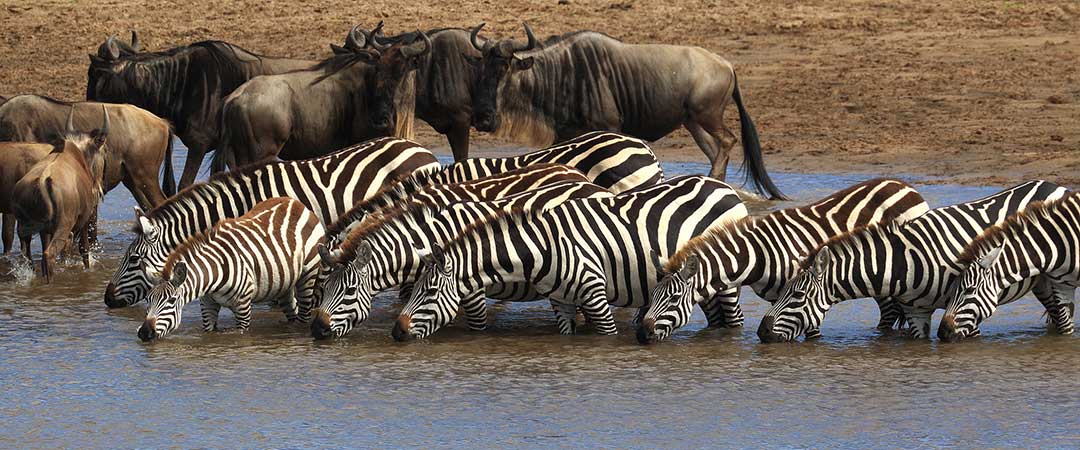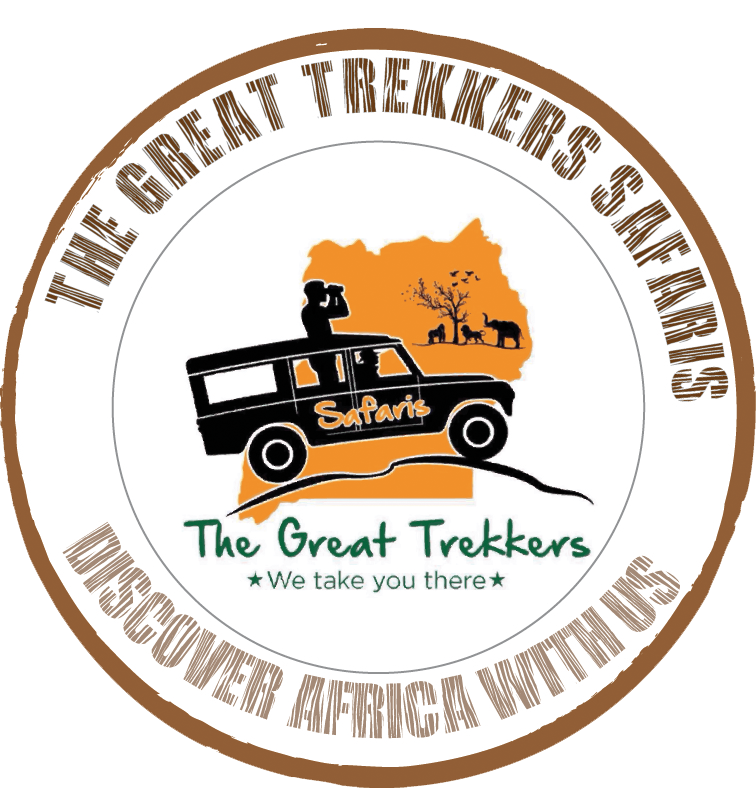The Serengeti National park is the African Paradise and one of the seven natural wonders of Africa and the World. It is also a world heritage site, Man and Biosphere Reserve.

Visiting Serengeti national park will reward you and breathtaking for its unique biodiversity and physical features from plains to rolling hills, valleys and mountains. Serengeti offers several tourism products.
The park is located in the Northern Part of Tanzania, and it’s boarded by three regions which are Mara, Simiyu and Arusha. Serengeti is the oldest Park in Tanzania and well known worldwide especially for being a heart of the only great wildebeest migration remained in the World to date. It is also forming a heart of Serengeti Mara Ecosystem that includes Ngorongoro Conservation Area, Loliondo Game Controlled, Maasai Mara National Reserve, Ikorongo Game Reserve, Grumet Game Reserve, Kijereshi Game Reserve and Maswa Game Reserve.
Serengeti Ecosystem
The popular activity in the Park is game viewing enhanced by malt Game circuits connecting the Main Roads from Naabi Hill Gate – Ikoma Gate, Naabi Gate – Ndabaka Gate, Kleins – Ikoma Gate. However the main entrance is the Naabi Hill Gate connecting Ngorongoro Conservation Area and the Serengeti National Park.
Park History
The name Serengeti comes from the Maasai word “Siringeti” referring to an “Endless Plain”. As you stand on the Southern grass plains, you experience this vastness, and can witness one of the greatest concentrations of plain animals left on earth. The plains were formed 3-4 Million years ago when ash blown from Volcanic mountains of Ngorongoro highlands. The thick layer of ash preserved traces of early man, and established the rich soil which supports the growth of short grasses in Southern plains. From this early beginning, man and wildlife have shared this magical place. In recognition of the need to preserve this special area, The Central Serengeti was declared a Game Reserve in 1929.
In 1951, the Reserve became Tanganyika’s first National Park, and in those days included the Ngorongoro Crater.Further alteration in 1959 resulted in the Park boundaries you see today. Part of the Serengeti plains and the highlands were designated to the Ngorongoro Conservation Area, while extensions to the North and South were included to provide more protection to Migratory animals. Covering approximately 14,763 Square Kilometers, the Park is roughly the size of Northern Ireland or Connecticut, making it Tanzania’s second largest national park.
The Park is the Centre of the Serengeti ecosystem as the core area. Roughly defined by the annual Wildebeest Migration, the Serengeti ecosystems is expansive – and area of approximately 25,000 – 30,000 Square Kilometres. It is the combination of Serengeti National Park with its buffer zones –Ngorongoro Conservation Areas, four Game Reserves, one Game Controlled Area and Kenya’s Maasai Mara National Reserve – that protects the largest single movement of wildlife on earth.
The Serengeti was first inhabited by the ancient hunter gatherers and more recently pastoralists. The plains were controlled by the Maasai. There are early Maasai rock paintings still visible at Moru and a special rocks used for making different sound (Gong!, Gong!). The colonist who arrived by the early 1900’s found a land virtually untouched, and exploited it for exceptional hunting opportunities, particularly Lion, Leopard and Buffalo. Serengeti offers more than just an annual migration. Its colorful topography of Mountains, Rolling Hills, Rivers and Plains provide year round habitat for many of the Serengeti’s wildlife species.
How to Get in Serengeti National Park
The Park can be accessed by Air and by road through fifteen (15) entry points. By Air the Park is accommodating Seven (7) Airstrips which can be accessed from all Local and International Airports in the country. By road the park can be accessed through eight gates (8) which are Naabi Hill Gate, Ikoma gate, Ndabaka Gate, Kleins Gate, Tabora B, Lamai Gate, Handajega Gate and Ndutu Gate.
The distance from Arusha to Naabi Gate is 272km through Ngorongoro Conservation Area, from Arusha to Kleins Gate 420km, from Mwanza to Ndabaka Gate 141km, From Mwanza to Ikoma gate through Mugumu District 253km. From Sirari Boarder to Ikoma is approximately 158km via Kiabakari – Butiama and Mugumu. From Sirari – Ikoma Gate via Nyamongo, Mugumu 138km. From Sirari – Lamai Gate via Nyamongo 67km.
Best Time to Visit Serengeti
Serengeti National park can be visited throughout the year, however the best season is between Mid-May to Mid-October. The short rains starts from early November to December while long rains starts from January to March allowing the Wildebeest to calve in the Southern short grass plains.
Tourist Attractions in Serengeti National park
These are unique places where Tourist can visit, normally for its intrinsic or unveiled natural, cultural value, historical significance, natural or built beauty, offering recreations, leisure, adventure and enjoyment. Attractions in the Serengeti are vast, diverse and spread into several zones/ corridors and habitats.
The Great Wildebeest Migration
The annual movement of wildebeest and other grazing herbivores across the Serengeti-Mara ecosystem is one of the greatest spectacles in the natural world. Originating on Serengeti short grass plains of the southeastern Serengeti, the dwindling of the available grass is the impetus for this primal trek. The horizon fills with more than 1.5 million wildebeest, 200,000 zebra and 500,000 Thompson’s gazelle, relentlessly tracked by Africa’s great predators.
In essence, the wildebeest are taking advantage of the strongly seasonal conditions, spending the wet season on the southeastern plains of the Serengeti, and the dry season in the woodlands of northern Serengeti. The Wildebeest give birth between January and March on the short grass plains. The migration is rarely ever the same in terms of precise timing and direction, as local conditions influence grass growth. The Wildebeest may therefore move off the open plains earlier in some years and remain in the northern woodlands for longer in others.
Around October, nearly Two Million herbivores including Wildebeest and Zebra travel from the Northern hills toward the Southern plains, crossing the Mara and Kirawira Rivers, in pursuit of the rains in April, they return to the North through West, once again crossing the Mara and Kirawira rivers. This phenomenon is sometime called the Circular Migration.
Kopjes
The Serengeti national park would not be the same without the beautiful rock outcrops known as Kopjes (pronounces “Copy” from the Dutch meaning “Little Head”). Technically known as inselbergs, the intriguing rounded shapes of these ancient granite rocks are the result of cracking and erosion from exposure to sun,wind and rain. They provide shelter and capture water for a wealth of wildlife and plants. In fact, without such environs, lions and other large animals would be unable to survive the dry season on the plains.
The main groups of kopjes are: Barafu, Gol, Wogakurya, Maasai, Loliondo, Simba and
Moru kopjes are outstanding for their size and profusion of resident wildlife including lion, leopard, serval, caracal and even rhinoceros and elephant. Gol and Barafu kopjes provide important habitat for cheetah,and are used by wildebeest in the wet season
Maasai and Loliondo Kopjes provide outlooks for resident Lion and Large Cobras can often be seen sunning themselves on the rocks. Simba Kopjes support a great variety of animals and birds including Giraffe, Baboon and Lion (Simba) for which they are named.
The Endangered species
The most prominent endangered species in Serengeti national park are the Black Rhino and Wild Dogs. The concerted conservation efforts has enabled the existence of Rhinos and the Wild dogs in Serengeti National Park, hence adding value to tourists visiting the Park.
Predators
Lions and Hyenas supports one of the highest concentrations of large predators in the Serengeti. Approximately more than 3,000 lions and 7,500 Hyenas prey on the “moving feast” and on resident herbivores. Other predators such as Leopards, Cheetahs, Jackals, Serval Cats, Caracals and other play a major role in maintaining the ecosystem stability.
Southern Plains
The southern grass plains are some of the most productive and nutritious natural grassland in the world. When the short rains start in November, the Wildebeest move south from the Northern woodlands. They move to exploit the short grass plains, where the grasses are rich in the minerals they need to rear their calves.
In February/March one of the wildlife’s most amazing spectacles occurs. For 3-4 weeks,
90% of the female Wildebeest give birth, flooding the plains with thousands of newborn calves each day. The Wildebeest may remain on the plains for several months, where they share these productive grasslands with Migratory Zebra, Thomson’s gazelle and Eland, as well as the many residents including the Grant’s gazelle, Topi and Hartebeest.
The plains are also used by migratory birds including the White Stork, Black Stork, Pallid Harrier, and Peregrine Falcon. When the rains stop, the plains dry out rapidly forcing the herds to migrate west and North once again. Their departure in May/June marks another great spectacle. The Wildebeest march in long, meandering lines that stretch for miles, or bunch into herds of thousands. These are the scenes that typify “The Migration”. The southern plains are best visited from December to May when migrants are there.
Seronera Valley
It is possible to see many of the Serengeti’s resident wildlife including Giraffe, Buffalo, Topi, Hartebeest, Waterbuck, Impala, Reedbuck, Bushbuck, Dikdik, Hippopotamus, Crocodile, Warthog and diverse birdlife. Large prides of Lion reside here, as well as clans of Spotted Hyena. The more Elusive Leopard is also common here but less easy to spot!
The river tracks offer the best chance to see a Leopard, which will usually rest in the branches of acacia or sausage trees. Cheetah can also be seen here as well as Serval and Caracal.
Cultural and Historical Sites
Serengeti national park was first inhabited by the ancient hunters and gatherers, and more recently Pastoralists. The plains were controlled by the Maasai. There are early Maasai rock paintings still visible at Moru and a special rock used for making different sound (Gong! Gong!) named the Gong Rock.
Biodiversity
Apart from the great Wildebeest Migration, Serengeti national park accommodates up to 28 species of hoofed animals that contribute to the greatest abundances and species diversity of plains animals in the world. The Park is known for its great abundance of larger World Predators population such as Lions (More than 3,000) and Hyena (more than 7,500). Serengeti is also a home of more than 530 bird Species and various species of plants. During winter the park accommodates several species of Migratory birds from other countries in Africa, Europe and Asia, Other small creatures like insects reside the Park too.
Retima Hippo Pool
The pool accommodates a number of hippopotamus, Crocodiles and some species of waterfowls. The pool is the refugee for Hippos and Crocodiles in dry seasons.
Available species
Western Corridor, stretching almost to the shores of Lake Victoria, the reach of the Western Corridor is important in preserving ancient migratory routes. In a typical year, the migration arrives between June and July, having left the dry plains in the south. Here the migrants mix with many resident herbivores, including Topi, Giraffe and Buffalo. There is also a resident population of Wildebeest!
Supporting lush riverine forest, the Grumeti River provides a sharp contrast to the surrounding plains and hosts some of the Serengeti’s more unusual species, such as the Black and White Colobus Monkey. It is the river’s population of giant Nile Crocodiles at Kirawira that has made this area famous. Growing up to 6 meters in length and with unusually thick set jaws, their lives are inextricably linked with the great migration. Moving with surprising stealth and speed, they prey upon the thirsty heads as they drink from the river. This time of plenty for the Crocodiles will sustain them until the herds return next year.
Tourism Activities in Serengeti National Park
Serengeti national Park comprises of various activities that Tourists do during their visit such as Game viewing, walking safaris, Bird watching, Balloon Safaris, Bush Meals, Cultural and historical sites visits as well as Filming and Photographic Safaris.
Game Drives
Game viewing gives wide and superb wildlife viewing opportunity to explore various part of the park, tourist circuits designed to enable you to access the attractions.
Walking Safaris
Get out of vehicles stretch and walk, test, touch, feel and sense the true nature African paradise Serengeti wilderness. Short and Long walking safaris are designed to suit for all ages groups.
Bird Watching
Bird watching in Serengeti national park is a rewarding as the park being birds paradise has more than 540 birds species, including raptors, water birds, song birds both residents and migrants from Europe, Afro tropic and other regions.
Hot air Balloon Safaris
Gets the Birds eye view experience in a Balloon while enjoying the wildlife and the natural environment of the Park.
Bush Meals
Bush breakfast, Lunch and Dinner give the true test of wilderness in a unique style.
Filming and Photographic Safaris
Serengeti provides the opportunity for Filming and Photographing of spectacular wildlife in their natural habitat. Take with you memories of the beautiful nature in this side of the World
Picnicking
Serengeti national park has a number of picnic sites or view-points. These are best area designed for taking shorts and stretching after long drives. They are also best points for taking packed meals while on game drives. Some picnic sites found in Serengeti are; MaweMeupe, Retima, Kirawira A, Seronera Visitors’ Center and all Park entrance points.

